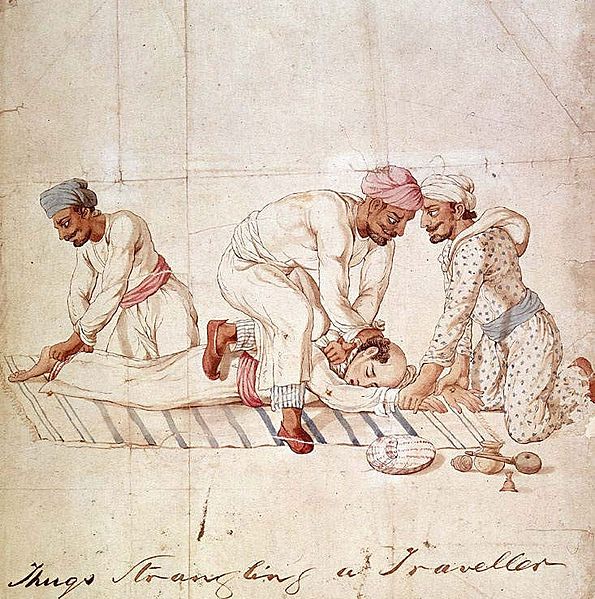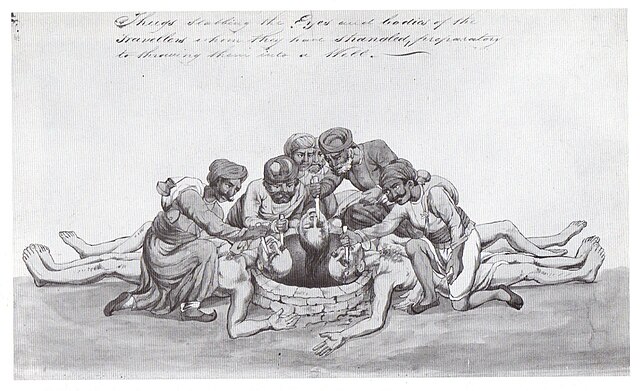Since the 1870s, various pieces of colonial legislation in India during British rule were collectively called the Criminal Tribes Act (CTA). These criminalised entire communities by designating them as habitual criminals.
A Government of Bengal, CID pamphlet, on Gobinda Dom's Gang, under the Criminal Tribes Act (VI of 1924), dated 1942.
Governor Warren Hastings
Colonial depiction of thugs attacking a traveller.
Svetambara giving instructions, c. 1750–60.
Thuggee and Dacoity Suppression Acts, 1836–48
The Thuggee and Dacoity Suppression Acts, 1836–48 in British India under East India Company rule were a series of legal acts that outlawed thugee—a practice in North and Central India involving robbery and ritualized murder and mutilation on highways—and dacoity, a form of banditry prevalent in the same region, and prescribed punishment for the same.
A watercolour by an unknown Indian artist from the early 19th century purporting to show a group of thugs in the process of distracting a traveller on a highway in India while he is about to be strangled with a ligature.
Watercolour by the same artist purporting to show three thugs in the process of strangling the traveller: one holds the feet, another the hands, while a third tightens the ligature around the neck.
A sketch by an unknown artist from the early 19th century purporting to show a group of thugs stabbing the eyes of three travellers they have recently strangled, preparatory to further mutilation and deposition in the well.






